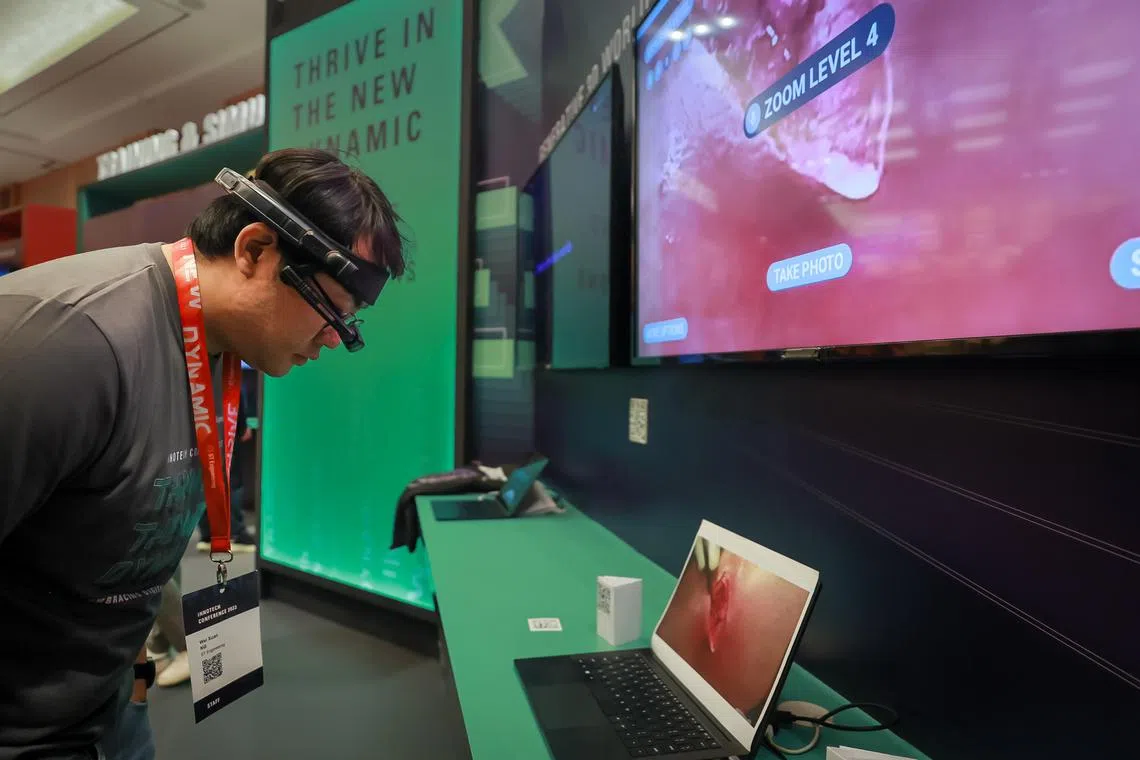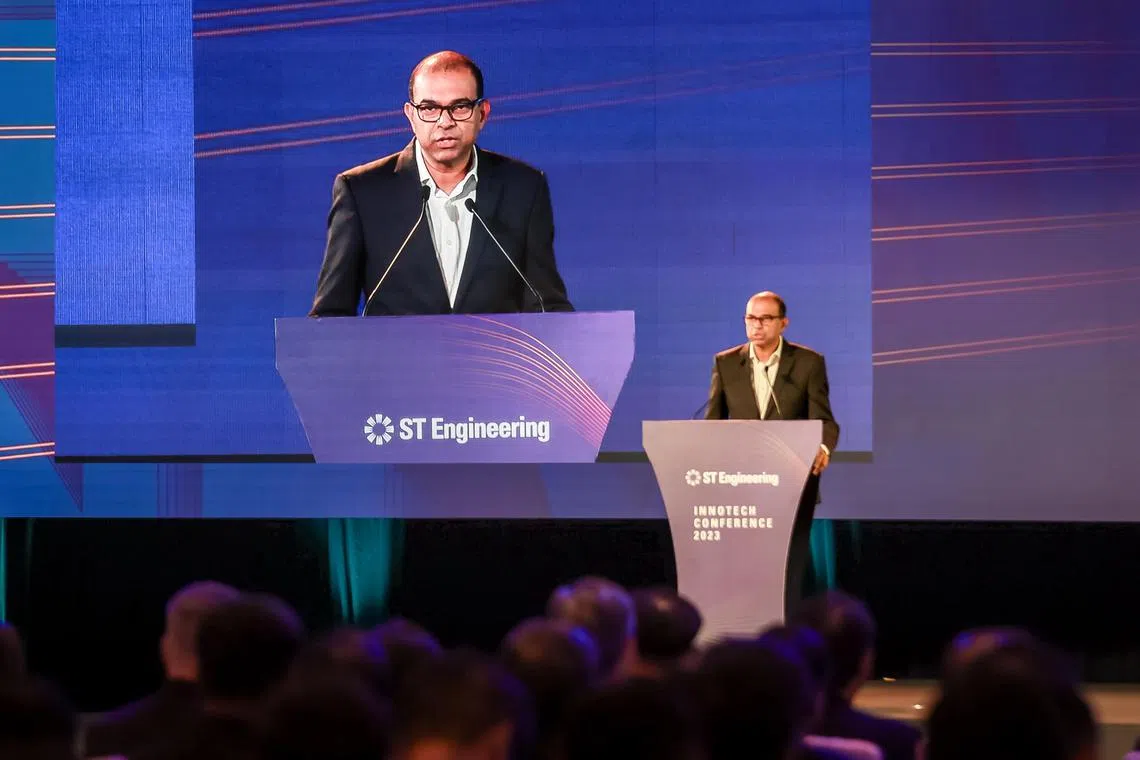ST Engineering unveils voice-enabled headset for nurses, surveillance system with search bar
Sign up now: Get ST's newsletters delivered to your inbox

The headset has a camera mounted on the headband that streams footage from the consultation to the doctor, who can then instruct or diagnose remotely.
ST PHOTO: GAVIN FOO
Follow topic:
SINGAPORE - Nurses here will soon be able to take notes when talking to patients and prepare reports with the help of a wireless, smart headset that follows voice prompts and leverages artificial intelligence (AI).
The headset has a camera mounted on a headband that streams footage from the consultation to the doctor, who can then instruct or make a diagnosis remotely.
The virtual remote assistant headset was among a suite of new systems presented by Singapore Technologies (ST) Engineering on Tuesday at the one-day InnoTech Conference held at Marina Bay Sands.
The systems are developed in Singapore and cater mainly to healthcare, enterprise, security and defence clients.
The voice-enabled headset was created to ease the workload of healthcare professionals amid a manpower crunch in the industry, said business development manager Kelvin Ang, who is part of the ST Engineering training and simulation systems team.
Doctors and nurses need to take notes – using a computer or on paper – during consultation or surgery, and then sterilise their hands before they resume tending to the patient.
But with the headset, healthcare providers can voice their observations about the patient, as well as state the medicine given, for their colleagues to follow up.
These notes can be drafted into a report with the help of generative AI.
Nurses can call doctors for specialised support through video streaming.
“It’s no different from using FaceTime, but with this program, multiple systems like video call, note-taking and automated voice commands will be integrated into one platform,” said Mr Ang.
ST Engineering is partnering Tan Tock Seng Hospital to test the system, which is expected to be rolled out within a year or so.
The team intends to work with other healthcare providers to adapt the system to their needs.
The virtual assistant was among 18 tech solutions on display at the conference, which has been held annually by ST Engineering since 2019 to showcase its innovations.
Senior Minister of State for Communications and Information Janil Puthucheary said in an opening speech on Tuesday that the digital industry faces significant disruption in the form of AI, which could affect jobs due to automation or raise the threat of cyber attacks.

Senior Minister of State for Communications and Information Janil Puthucheary speaking at the ST Engineering InnoTech Conference on Sept 5.
ST PHOTO: GAVIN FOO
But these disruptions could turn into opportunities and competitive advantages when managed effectively, said Dr Janil, citing Singapore’s plans under the Digital Connectivity Blueprint to promote greater connectivity, more software tools to support digital transactions and help devices work together through digital connections.
He added: “With greater connectivity domestically and internationally, enterprises can leverage latency-sensitive technologies like AI, cloud and augmented/virtual reality seamlessly and more effectively to chart new business opportunities, locally and abroad, and create more value for customers.”
Among the other tech solutions on display at InnoTech was a video analytics platform that can identify objects captured in surveillance footage through a search bar that works like a Google search.
Dubbed Agil Vision, the AI software recognises most objects, movement and even clothing brands without the need for security operators to train the system’s algorithms with heaps of additional data samples beforehand, said digital business senior vice-president Gregory Cheong.

ST Engineering’s Agil Vision, a security analytics program that can search through footage based on user prompts.
ST PHOTO: GAVIN FOO
Operators can key in descriptions – like “two people fighting near a car” or “people climbing over a fence” – to quickly narrow down the footage instead of trawling through dozens of hours of videos, he said.
“The technology can benefit many sectors: public security, defence or construction to ensure work safety practices,” said Mr Cheong, who added that projects with security and construction companies are under way.
The system works like a commercially available version of the Singapore Police Force’s surveillance system, PolCam 2.0, which similarly recognises clothing and unusual activity such as a sudden gathering of people.
The Agil Vision program can be integrated with a security command hub software that actively monitors threats and anomalies in a designated area.
Operators can curate a news and social media feed to monitor events or developments related to an area, and display the number of visitors estimated by the system’s video analytics.
The system can identify suspects seen on cameras and piece together other sightings of the individual to build a detailed profile of the suspect’s activities within the premises, such as if he met another person or left a bag unattended on the ground, said enterprise solutions division senior manager Jerome Chia.

